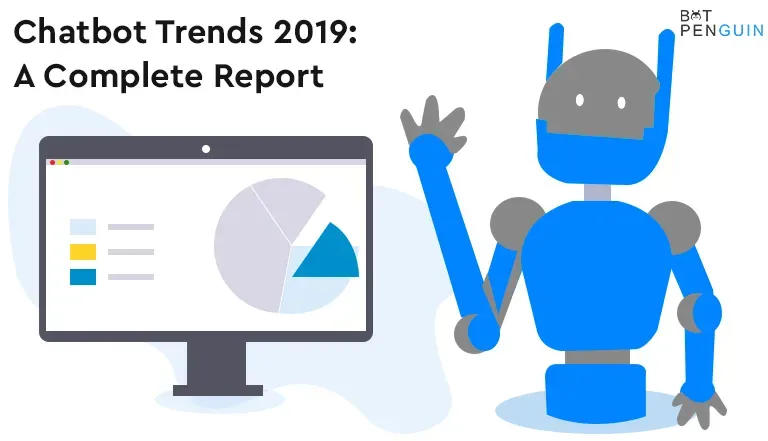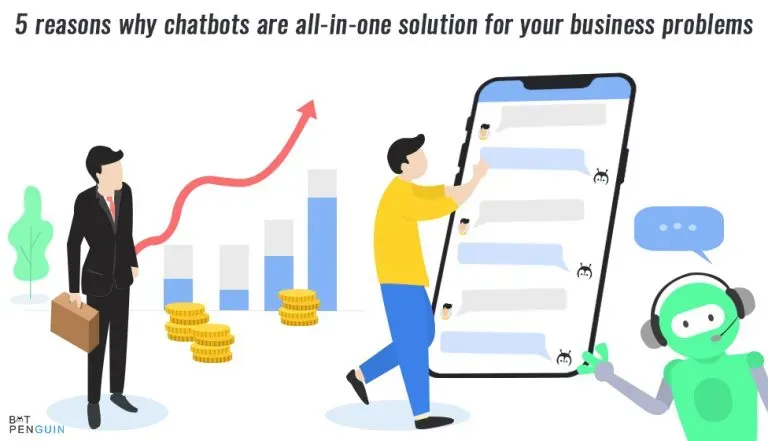Let's get straight to it. Chatbots - they're not just another tech buzzword. They’re digital helpers designed to mimic human conversations. And they're popping up everywhere.
From our favourite online stores to weather apps, chatbots are transforming how we interact with the digital world.
But why the fuss about chatbots? Imagine getting quick and interactive responses without any human involvement. It’s as simple as asking Siri about today's weather or querying Alexa about your schedule.
A bright, prompt, and accurate answer awaits you.
But is it all just hype or the start of something big? They say numbers don't lie. Statistics have a way of showing what's fluff and what's substance. So, let's cut through the noise and look at the hard facts.
What do the numbers say about where chatbots are heading by 2024?
This blog will pull together key stats to deliver a well-rounded picture. It’s all about unmasking the reality and potential of chatbots in the near future. Let's navigate the world of chatbots, examining the good, the great, and the not-so-smooth, to help us get ready for what's next. So, buckle in as we unpack the essential chatbot stats for 2024. No jargon, no counts of corporate lingo, just straight, clear facts.
Overview of the Current Chatbot Market
Let's start with what's happening right here, right now. The current chatbot market is buzzing with activity. But how big is it really, and who's using chatbots the most?
Let's take a quick dive into the status quo.
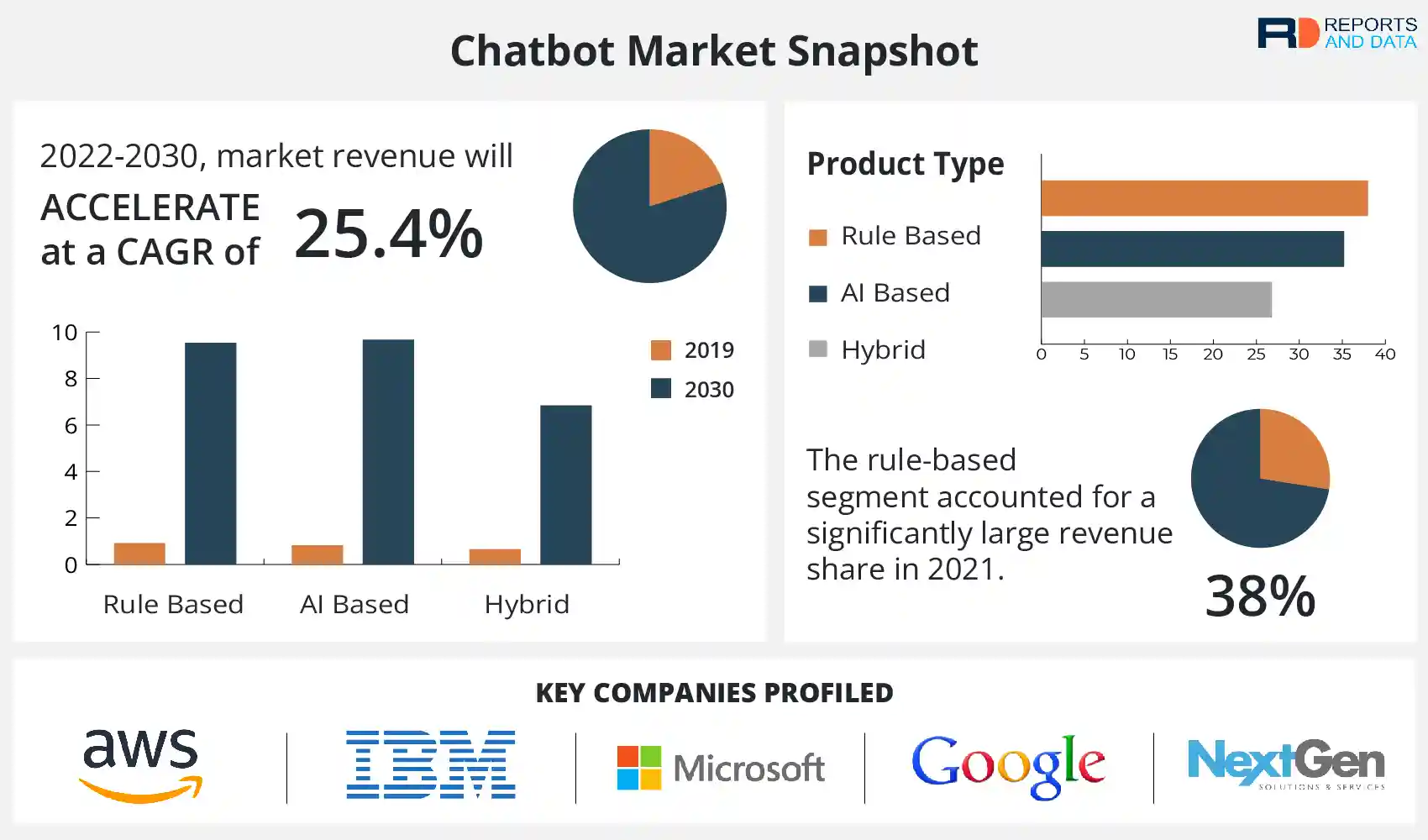
The Heartbeat of the Current Market
Chatbot technology is definitely not in the realm of tomorrow anymore; it's very much a part of our today. Across the globe, tons of industries are leveraging the power of chatbots.
From retail to hospitality to healthcare, chatbots are in use everywhere. They're helping out with everything from booking a hotel room to ordering a pizza, even reminding you to take your pills.
According to industry reports, the global chatbot market was estimated to be worth around $2.6 billion in 2019. With a predicted growth rate of 29.7% annually, we're looking at a compounded spike.
In terms of geography, North America is leading the game with the largest share of the market. But regions like Asia-Pacific aren't far behind.
A critical piece of the picture is who is chatting with these bots. Research points towards a millennial-led user base. Nearly 60% of millennial respondents have used chatbots at least once, according to a survey.
Other age groups aren't idle either. Gen X and Boomers are warming up to the idea of getting their queries solved by friendly chatbot assistants.
But the tale isn't complete without understanding why.
Why the surge in chatbot use?
The answer seems to lie at the intersection of efficiency and satisfaction. Consumers appreciate the 24/7 availability of chatbots. Meanwhile, businesses see a chance to offer constant support without straining resources.
To sum it up, chatbots have gone from sci-fi imagination to real-world application. They're already forming an integral part of our digital interactions.
With an already diverse user base and multiple industries involved, anticipation builds for what 2024 holds for chatbots.
Projected Chatbot User Demographics in 2024
Peeking into the year 2024 can give us an idea about who is likely to be interacting with chatbots most often. Let's put our prediction hats on and explore future chatbot user demographics, shall we?
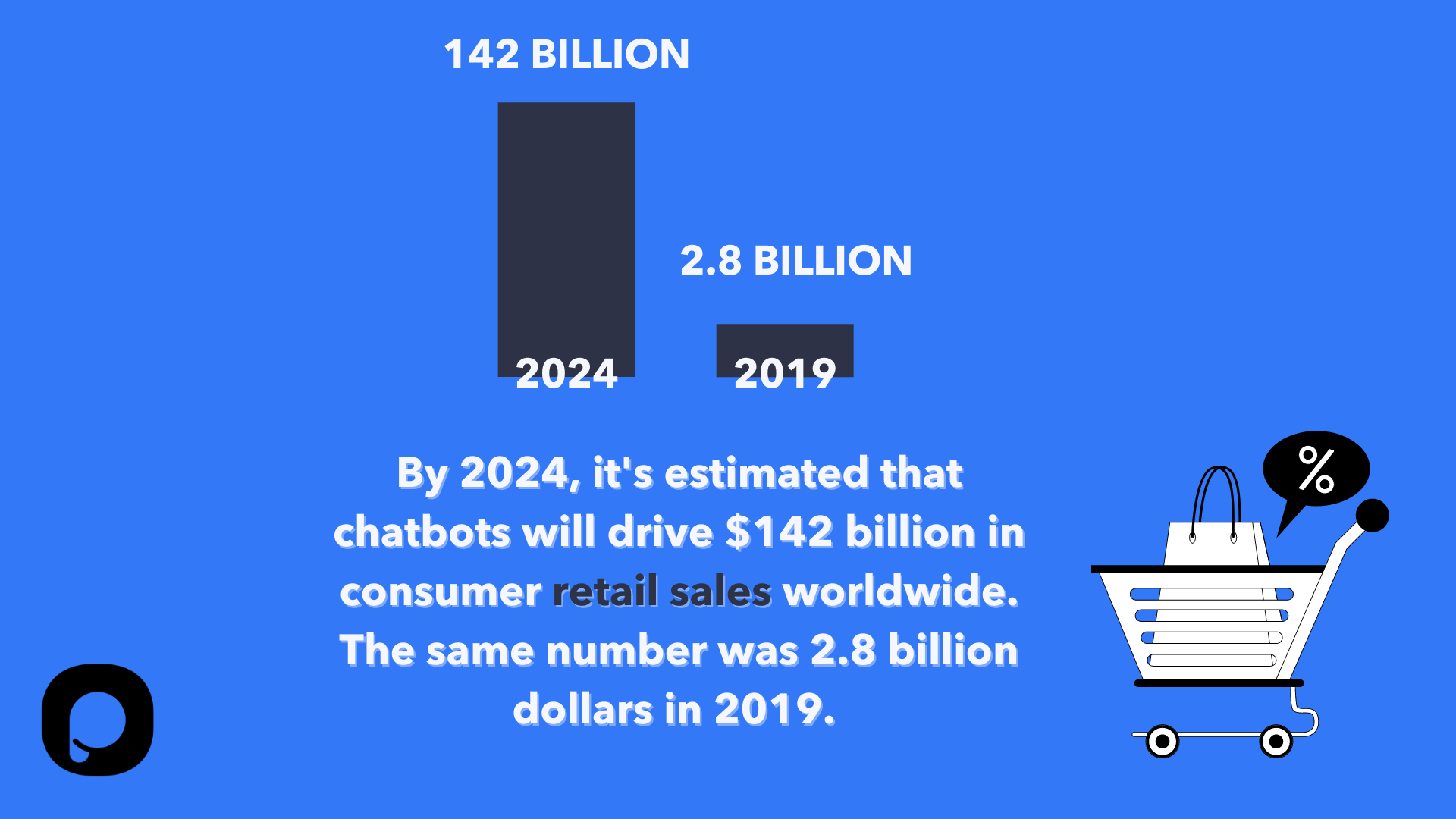
Anticipating Chatbot Users in 2024
We already know that millennials have welcomed chatbots with open arms, but will this trend continue or change by 2024? With new generations stepping into adulthood, there is a high likelihood that chatbot use will rise among these tech-savvy young folks.
In fact, Gen Z is expected to represent a significant portion of chatbot interactions as they become career-focused, independent earners.
Growing connectivity means that chatbots will make their way into other age groups as well.
By 2024, it is quite possible that a rising number of Gen X and Baby Boomers will be interacting with chatbots, valuing them for their personalized support, quick responses, and problem-solving assistance.
As chatbots evolve to be more conversational, senior citizens may turn to these digital assistants for company and simple query resolutions.
Geographically, we can expect this bot bonanza to spread across wider areas as diverse regions adopt chatbots.
While North America may still hold a significant share, Asian markets are expected to grow exponentially due to their rapidly increasing internet and mobile penetration.
Developing countries with high populations, such as India, Indonesia, and Nigeria, may experience a surge in chatbot users.
Language and localization will remain important factors when determining user demographics.
To include a growing number of non-English speakers, chatbot developers will have to implement multi-language support. By 2024, we can anticipate that chatbots will cater to a more diverse linguistic user base.
In terms of industries, no sector will be left untouched by the chatbot wave. Reports suggest that financial services, healthcare, travel, and e-commerce sectors will see significant chatbot adoption.
Industries that require regular communication between brands and clients are more likely to utilize chatbots to streamline interactions.
In conclusion, by 2024, chatbot user demographics are expected to broaden across various age groups, expand across geographical regions, appeal to diverse linguistic users, and span multiple industries.
Riding the wave of growing connectivity and technological advancements, chatbots will continue to be an important part of our digital conversations in the future.
Predicated Impact of Chatbots on Customer Service by 2024
You've heard about what's happening and who's involved. Now, let's tackle what this might mean for customer service. How is AI tech going to evolve this critical business aspect by 2024?

Unveiling the Future of Customer Service
Chatbots are distinctly influencing customer service, and this shift isn't going to slow down anytime soon. With more refined AI, chatbot responses are becoming more human-like, offering a seamless interaction experience.
Browsing through products, asking about services, or addressing grievances becomes a smooth, 24/7 process with chatbots at the helm.
Tidio's stats reveal that consumers are frustrated with long wait times when interacting with businesses, with 53% finding it extraordinarily annoying. Enter chatbots. Instant responses are right up their alley.
When alternatives mean waiting 15 minutes for a human response, 62% of users would rather engage with a chatbot.
But it's not just about being there; it's about solving issues. Take comfort in the fact that close to 90% of consumer queries are sorted within ten messages or fewer. Efficiency? Check!
And here's the silver lining for businesses: cost savings coupled with increased efficiency. By 2024, the wheels of cost-effective, streamlined customer service are set to spin even faster. Projections say global retail consumer spending via chatbots might hit a whopping $142 billion.
Why?
The answer lies in sales growth. Businesses already using chatbots are seeing happier customers. More satisfaction means higher sales - it's a sweet, cyclical process.
Moreover, with AI's rapid progression, we're likely to see a rise in voice-assistants and advanced language models such as GPT-3 beyond text chatbots.
So, by 2024, we're not just looking at bots taking over customer service. We're seeing a promising shift to a world where bots do it faster, around the clock, across languages, and in a manner that feels delightfully human.
The future for chatbots in customer service looks bright, to say the least!
Expected Economic Impact of Chatbots in 2024
Chatbots are creating ripples throughout the business world today. But what's the prognosis for these handy helpers in 2024? Will they make a bigger splash? Let's dive into the expected economic impact of chatbots in 2024.

A Quantitative Look at Chatbots in 2024
Based on the information provided, there's a significant boost in chatbot market size and adoption rates on the horizon.
By 2023, the chatbot market could soar over $994 million, and with a compound annual growth rate (CAGR) of 22%, it could reach a staggering $3 billion by the end of the decade.
From cost savings to sales, chatbots are transforming business practices.
In fact, chatbots saved around $11 billion in 2022. With even more businesses expected to embrace chatbots moving forward, these savings are projected to grow.
Businesses could save up to 30% on customer support alone by deploying a chatbot.
In addition to these cost savings, chatbots could help drive sales. A report from Business Insider Intelligence anticipates that global retail consumer spending via chatbots will touch $142 billion by 2024.
Many industries—from eCommerce to healthcare—are noticing the benefits in customer service and marketing operations, leading to increased satisfaction.
Chatbots will likely take up an even greater role in marketing and support in 2024.
As they become more widespread, businesses will need to make sure their chatbots are providing an excellent customer experience, handling more complex conversations, and providing accurate information.
The expected impact won't be contained to financial gains alone. As chatbots grow more sophisticated (with advancements like GPT-3), they'll be able to handle an array of tasks, making them an appealing option for businesses in different sectors.
This could lead to a faster adoption rate among small businesses, eager to leverage their efficiency in customer service and sales.
Overall, the economic impact of chatbots in 2024 is shaping up to be monumental.
With significant growth in the chatbot market size, adoption rates, and anticipated advancements in technology, these AI-powered assistants are on track to revolutionize the way businesses interact with customers, manage their operations, and drive growth.
Predicted Technological Advancements in Chatbots by 2024
Artificial intelligence is evolving at an incredible pace, and chatbots are along for the ride. But what's in store for these digital wonder-workers in 2024?
It's time to explore the exciting innovations expected to evolve this space.
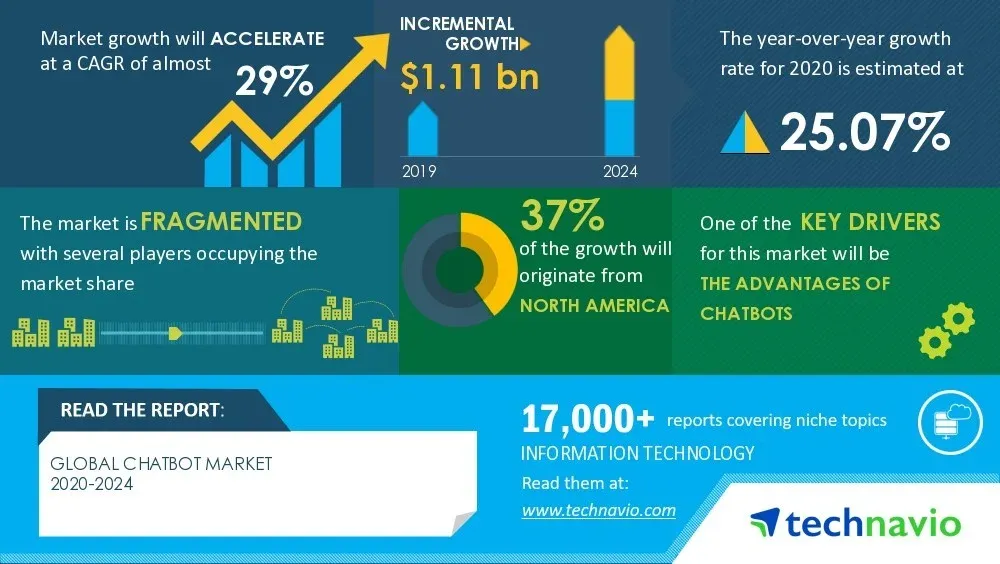
Technological Evolution of Chatbots by 2024
As we journey towards 2024, anticipate witnessing a significant technological leap in chatbot design and functionality.
Current trends suggest a strong shift towards more AI-integrations and machine-learning capabilities. These advancements will likely yield chatbots that are smarter, more intuitive, and incredibly efficient.
Expect to see Natural Language Processing (NLP) come into the spotlight. This AI subfield revolves around the interaction between computers and humans through language.
An advanced level of NLP in chatbots means the bot understands not just the words, but also the sentiment behind the text, resulting in more personalized and human-like responses.
Voice chatbots will probably rise in popularity. Imagine Siri or Alexa, but as customer service representatives on every website you visit.
This technology will take user experience to the next level in accessibility and ease.
Personalization will hit an all-time high.
Chatbots of 2024 are expected to provide highly personalized recommendations based on the user's previous conversations, behaviors, and preferences. These advancements will improve user satisfaction, further encouraging chatbot interactions.
Considering the rapid rate of AI advancement, we might even witness chatbots with the ability to predict what the user wants to discuss next and offer solutions proactively.
Moreover, advancements in machine learning algorithms would make chatbots capable of self-learning and optimization.
In other words, they'll learn from their mistakes and become better with each interaction.
Emotionally intelligent chatbots are also on the horizon. They can deliver empathy in conversations, enhancing user experience and satisfaction significantly.
This will revolutionize customer service interactions, making them more humane and engaging.
Summing up, the chatbot technology landscape in 2024 is expected to be more dynamic and advanced.
With major strides in AI, NLP, machine learning, and emotional intelligence, the face of digital assistance and customer interactions will be reshaped, leading to a more efficient, engaging, and personalized user experience.
Conclusion
In conclusion, chatbots in 2024 will revolutionize customer engagement with ever-advanced AI. Economically, they'll boost efficiencies and cost savings while driving revenue growth.
Technologically, they're slated to become more intuitive, proactive, and human-like.
Enhanced personalization and emotional intelligence will redefine customer experiences.
In essence, chatbots will reshape the way businesses interact with their customers, offering service that's not just round the clock, but also remarkably human in its approach and understanding.
The era of digital assistance will be characterized by seamless, empathetic, and efficient interactions, sure to benefit both businesses and consumers.
Frequently Asked Questions (FAQs)
What is the projected growth rate of chatbots by 2024?
The chatbot industry is expected to grow at an annual rate of 29.7% from 2019 to 2024, according to research.
How many businesses are expected to adopt chatbots by 2024?
Research indicates that around 80% of businesses are projected to adopt chatbots in some capacity by 2024.
What are the key benefits of using chatbots in customer service in 2024?
Chatbots improve response time, provide 24/7 support, reduce operational costs, and enhance customer experiences, leading to increased customer satisfaction and loyalty.
How advanced will chatbot capabilities be by 2024?
Chatbots will continue to advance, with improvements in natural language processing (NLP), machine learning, and AI enabling more accurate and intelligent conversations with users.
What are the most popular industries utilizing chatbots in 2024?
Chatbots are widely used in industries such as e-commerce, banking and finance, healthcare, travel, and hospitality to streamline processes, enhance customer support, and drive business growth.

